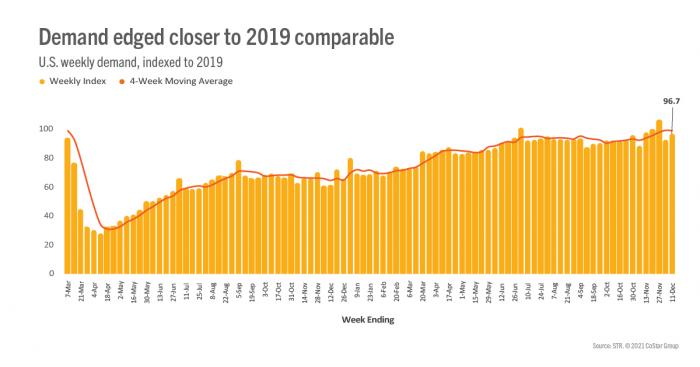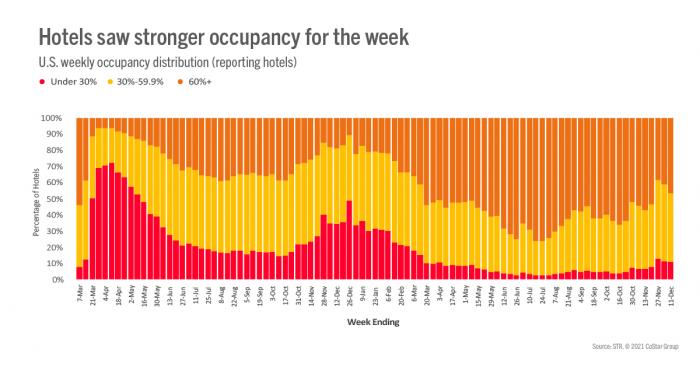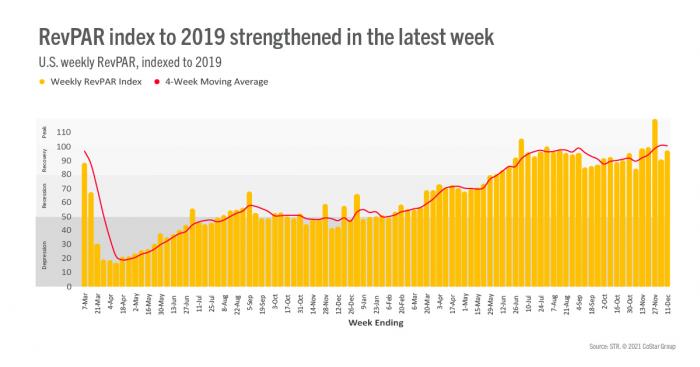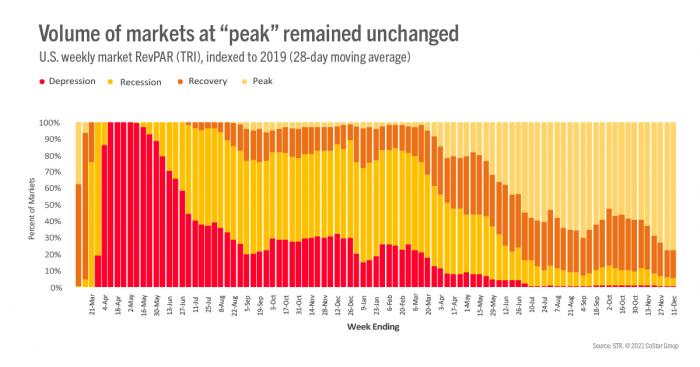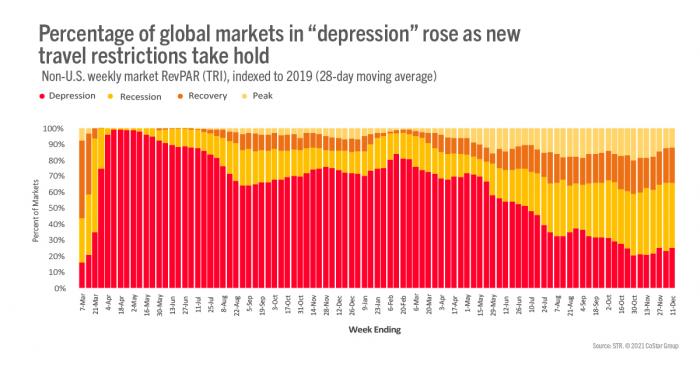Note: Due to the holidays, the next edition of the Market Recovery Monitor will not be published until 6 January.
For the first time in 85 weeks, New York City led the nation in occupancy (81%) as visitors returned to partake in the city’s holiday traditions and attractions. The market reported the nation’s highest weekday occupancy (79%) and the second highest weekend level (89%)—Bergen/Passaic, NJ edged out NYC for the top weekend spot. All weekly New York City occupancy measures were at pandemic-era highs. The market’s average daily rate (ADR) also hit a pandemic high, increasing 11% week on week to US$337, the nation’s third highest level behind Maui and the Florida Keys. Both occupancy and ADR, however, remained below levels seen in the comparable week of 2019.
Total U.S. occupancy reached 57%, indexing at 95, meaning this week’s occupancy was five percent lower than in 2019. Since the start of the pandemic, occupancy has indexed at 95 or higher five times—most of those instances have been post-Labor Day. Forty-three percent of the 166 STR-defined markets saw weekly occupancy surpass 2019 with most of the remaining markets indexing above 90. Six markets (Boston, Oakland, San Jose, Washington D.C., Madison WI, and San Francisco) lagged the nation with an occupancy index below 80. On average, occupancy in these six markets was 18 percentage points lower than in 2019. Across the U.S., nearly half of reporting hotels had weekly occupancy above 60%, which was the most of the past three weeks and two percent less than in 2019.
